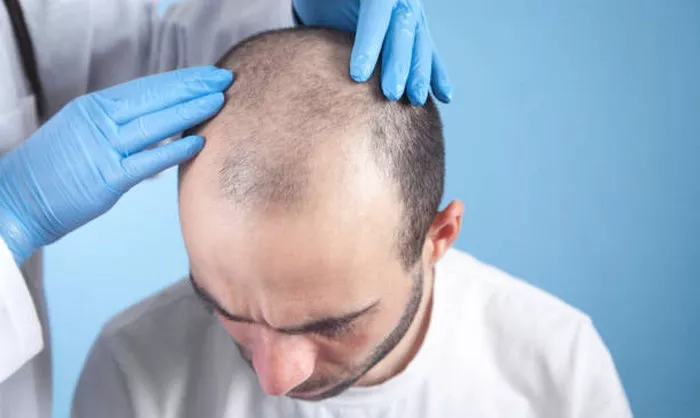Hair transplantation has become a popular and effective solution for individuals experiencing hair loss. The procedure involves transplanting hair follicles from a donor area to the thinning or balding areas of the scalp. While the results can be transformative, the post-operative care is crucial to ensure optimal healing and hair growth. One question that often arises among patients is: When can I use a derma roller after a hair transplant? This article explores the appropriate timing, benefits, and precautions associated with using a derma roller post-transplant.
Understanding Derma Rollers and Their Role in Hair Growth
What Is a Derma Roller?
A derma roller is a handheld device equipped with tiny needles that create micro-injuries on the scalp. These micro-injuries stimulate the skin’s natural healing process, promoting collagen production and increasing blood flow to the treated area. Derma rollers are widely used in skincare and hair care routines to enhance product absorption and encourage hair growth.
How Does a Derma Roller Work for Hair Growth?
When used on the scalp, a derma roller can:
Stimulate Hair Follicles: The micro-injuries trigger the release of growth factors, which can awaken dormant hair follicles.
Improve Blood Circulation: Enhanced blood flow delivers more nutrients and oxygen to the hair follicles, supporting healthier growth.
Boost Product Absorption: The tiny channels created by the needles allow topical treatments, such as minoxidil or serums, to penetrate deeper into the scalp.
The Importance of Post-Transplant Care
The Healing Process After a Hair Transplant
After a hair transplant, the scalp undergoes a delicate healing process. The transplanted grafts need time to settle and establish a blood supply, while the donor and recipient areas must heal properly. The first few weeks are critical, as any trauma or infection can compromise the results.
Why Timing Matters
Using a derma roller too soon after a hair transplant can disrupt the healing process. The micro-injuries caused by the derma roller may interfere with the newly transplanted grafts, leading to complications such as:
Graft Dislodgement: The grafts are fragile in the initial stages and can be easily dislodged.
Infection: Open wounds from the derma roller can increase the risk of infection.
Scarring: Premature use may cause unnecessary scarring, affecting the overall aesthetic outcome.
When Is It Safe to Use a Derma Roller After a Hair Transplant?
General Timeline for Derma Roller Use
The timing for using a derma roller after a hair transplant varies depending on the individual’s healing progress and the surgeon’s recommendations. However, a general guideline is as follows:
First 2 Weeks Post-Transplant: Avoid using a derma roller entirely. The scalp is highly sensitive, and the grafts are still settling.
Weeks 3–4: Consult your surgeon before considering any scalp treatments. Most patients are advised to wait until the scalp has fully healed.
1–3 Months Post-Transplant: Some patients may be cleared to use a derma roller with caution, but only under medical supervision.
3–6 Months Post-Transplant: By this time, the grafts are typically secure, and the scalp has healed sufficiently. This is the safest period to reintroduce a derma roller into your hair care routine.
Factors Influencing the Timing
Several factors can affect when you can safely use a derma roller after a hair transplant:
Type of Transplant Procedure: Follicular Unit Extraction (FUE) and Follicular Unit Transplantation (FUT) have different healing timelines.
Individual Healing Rate: Some people heal faster than others, so personalized advice from your surgeon is essential.
Scalp Condition: If you experience complications like infections or prolonged redness, you may need to wait longer.
Benefits of Using a Derma Roller After a Hair Transplant
Enhanced Hair Growth
Once the scalp has healed, a derma roller can complement the results of your hair transplant by stimulating the growth of both transplanted and existing hair.
Improved Scalp Health
Regular use of a derma roller can improve scalp health by increasing blood circulation and promoting collagen production, creating a more favorable environment for hair growth.
Better Absorption of Topical Treatments
If you are using minoxidil, hair growth serums, or other topical treatments, a derma roller can enhance their effectiveness by improving absorption.
Precautions and Best Practices
Consult Your Surgeon
Always seek approval from your hair transplant surgeon before using a derma roller. They can assess your healing progress and provide personalized recommendations.
Choose the Right Needle Length
For post-transplant use, opt for a derma roller with shorter needles (0.25–0.5 mm) to minimize trauma to the scalp.
Maintain Hygiene
Ensure that your derma roller is clean and sterilized before each use to prevent infections.
Use Gentle Pressure
Avoid applying excessive pressure when rolling. Gentle, even strokes are sufficient to stimulate the scalp without causing damage.
Follow a Consistent Routine
Once cleared to use a derma roller, incorporate it into your hair care routine 1–2 times per week for optimal results.
Alternatives to Derma Rolling in the Early Stages
If you are eager to support hair growth during the initial healing phase, consider these alternatives:
Low-Level Laser Therapy (LLLT): A non-invasive treatment that stimulates hair follicles without causing trauma.
Scalp Massages: Gentle massages can improve blood circulation and promote relaxation.
Topical Treatments: Use surgeon-approved serums or foams to nourish the scalp.
Conclusion
Using a derma roller after a hair transplant can be a valuable addition to your hair care routine, but timing is critical. Rushing into it can jeopardize the results of your transplant, while waiting for the appropriate time can enhance your outcomes. Always prioritize your surgeon’s advice and follow a cautious approach to ensure the best possible results. By combining patience with proper care, you can achieve a fuller, healthier head of hair and enjoy the benefits of your hair transplant for years to come.
You Might Be Interested In:

